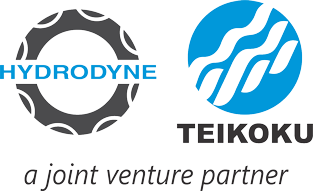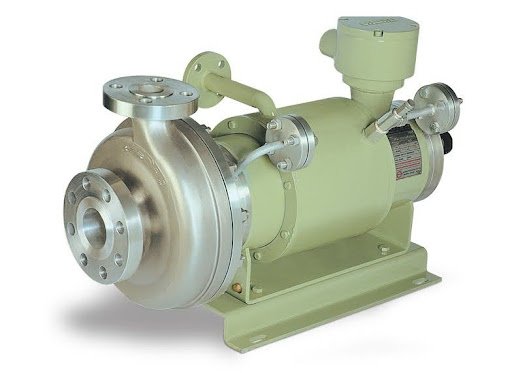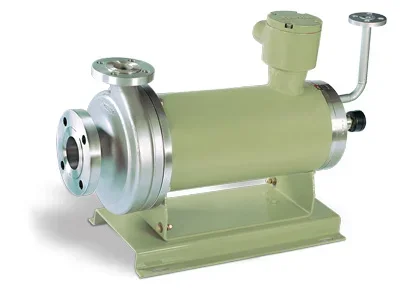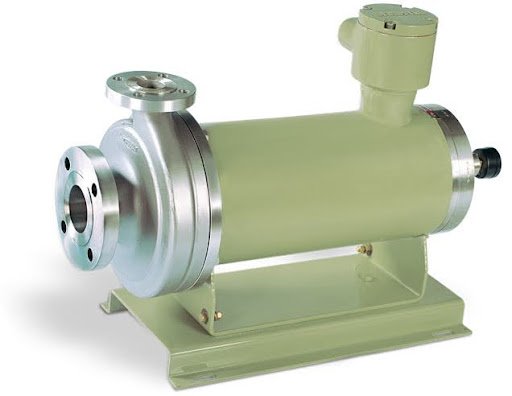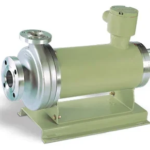
Top Benefits of Canned Motor Pumps for Industrial Applications
October 24, 2025
Why Multistage Pumps Are Essential for Starting High-Pressure Applications
October 27, 2025Understanding Flow, Pressure, and Capacity Requirements for API 685 Pumps
Addressing the needs and concerns of the users in the industrial fluid handling sector is a sensitive and demanding task, particularly in terms of reliability and precision. It does not matter whether the user needs help in the management of a chemical process, in refining hydrocarbons, or in the handling and transferring of highly hazardous liquids; the right selection of a pump is a matter of concern because of the safety, efficiency, and long-term performance outcomes. API 685 is among the most recognised in the industry, which covers sealless pumps in the petroleum, petrochemical, and chemical industries.
These pumps, most commonly known as canned pumps, are able to operate under very severe demands without losing reliability. This means that operational and safety requirements are still able to be met. It is very important to understand these three requirements to gain the maximum performance from API 685 canned pumps: flow, pressure and capacity. All three of these variables determine the effectiveness of a pump in a particular system and also the degree to which a process will be able to operate with the system.
API 685 pumps are developed with three core parameters. This includes pressure, flow, and capacity. This blog post also discusses the balance that plant operators and engineers have to achieve in order to get the best results.
The API 685 Standard: An Overview
The API 685 standard was published by the American Petroleum Institute on centrifugal pumps, including designs with magnetic drives and canned motors, and pumps with no seals. These pumps can be used safely with pumps handling hazardous, flammable, or toxic fluids and streams without any chance of leakage.
Conventional pumps utilise mechanical seals to control leakage along the rotating shaft, but, for the petrochemical and pharmaceutical industries, even the tiniest of leaks can pose safety risks, harm the environment, and create downtime, which is very costly. API addresses the risk of having mechanical seals by removing them and creating an enclosed system to ensure safe and reliable operation.
This results in pumps that provide:
- No leakage due to the absence of seals on the pumps.
- Greater safety when dealing with dangerous or corrosive liquids.
- Extended life and decreased maintenance due to limited components that wear.
In industries with limited downtime and control, safety and reliability with efficiency in operational performance can be seen with the use of the api 685 canned motor pump.
The Relationship Between Flow, Pressure, and Capacity
The relationship between flow, pressure, and capacity is central to the selection and performance of a pump. These three parameters are fundamental to and directly impact the efficiency and applicability of an API 685 pump to a given use case.
1. Flow Rate
Flow rate is defined as the total amount of liquid that the pump is capable of displacing during a given amount of time. It is usually measured and expressed as a volume/type of liquid per unit of time such as cubic meters per hour (m3/h) or liters per minute (L/min). Flow rate indicates the speed of liquid transfer by a pump in a given system.
The selection of the pump also depends on the rate of flow, and this is very important in order to keep the system or the process stable. If it is the case that the rate of flow is very low, we would say that the process would be inefficient. On the other hand, If the rate of flow is very high, we would say that the system would be characterised by turbulence, and wear, and it is also possible that cavitation would be experienced.
The flow rate that is needed depends on a variety of factors such as the following:
- The amount of liquid to be circulated and the rate at which it is required.
- The system that is in place, and the geometry and the features of the defined system, and the resistance.
- The type of process that is carried out, be it continuous or batch processes and the flow rate of liquid needed.
The correct flow rate allows the pump to work at optimum conditions. It also stops the pump from becoming worn out easily and losing performance.
2. Pressure (Head)
Pressure, or “head,” represents the energy required for the pump to move the fluid through the system against resistance, including friction losses, elevation changes, and system pressure. In centrifugal pumps, the head is often measured in metres or bars.
In closed-loop systems, the following influences head/pressure:
- Static head, the elevation difference.
- Friction losses in the pipes and fittings.
- Backpressure from the process system.
If the volume of the pump is undersized for the pressure requirements, the pump will not be able to reach the desired flow which means inefficient processing or mechanical strain. In contrast, over volumetric flow leads to energy loss and mechanical damage.
An API 685 pump properly sized will eliminate the mechanical wear and tear by providing stable flow and energy efficiency under wide variations of pressure.
3. Capacity
While there is interchangeability between the terms for flow and capacity, in pump engineering, capacity pertains to the pump’s ability to process a determined volume of fluid at a given pressure and rotational speed. It indicates the pump’s operating capability within the specified system parameters.
Calculating the required capacity is balancing the flow and pressure that needs to be delivered in order to achieve the desired output of the process. It is important to understand that the system curve (which dictates the flow and head losses in a system) and the pump performance curve must be evaluated to find the optimal point known as the Best Efficiency Point (BEP).
Moving away and operating past the BEP can cause vibration and the creation of unnecessary noise as well as mechanical stress which will in turn cause the pump to take longer to perform and thus wear it down quicker. It is important to properly set the capacity in order to guarantee that the energy consumption is minimised while the output remains constant.
The Interdependence of Flow, Pressure, and Capacity
These three parameters: flow, pressure and capacity are all very much intertwined, to the point wherein changing one will result in changing the rest. For instance, a system pressure will reduce a flow rate more, the higher a pump’s system pressure is, more so if constant pump speed is the target. This is similar to how one can exhaust flow and wear pressure while the system is capable of, which can often lead to cavitation or even a performance drop.
The pump performance curve of any API 685 pump can be used to capture this flow and pressure relationship and can be used to establish a guideline metric for selection and operation. This is a guide baseline that engineers need to establish a system that is balanced as a whole. It is better for the pump to work around the design point that satisfies both optimal energy efficiency and the flow and pressure requirements.
Factors Affecting Performance in API 685 Pumps
There are several operational and environmental factors that may impact the performance of the API 685 pump. Understanding these factors influences the selection and long-term maintenance of the pump.
- Fluid Properties – A pump’s hydraulic performance is affected greatly by the fluid’s viscosity, density, and temperature. For instance, pumping more power is spent on fluid of higher viscosity.
- System Resistance – Pipe length, bends, valves, and fittings add frictional resistance and impacts the head, altering the pump’s performance.
- Variations In Temperature And Pressure – increase the system temperature in a process and fluid viscosity as well as vapour pressure alters and thus affects performance stability.
- Installation Quality – fits which poor alignment and insufficient support bring ease lost in vibration and lost efficiency through wrong pipe diameters
- Pump Speed And Impeller Design – these shift the motors energy directly on the fluid and thus altering the head and flow.
Considering all factors, in the case of selected API 685 pump and its operational needs, engineers should ensure the selected option is high in reliability and efficiency.
Design and Selection Considerations
Selecting the right pump involves more than just matching flow and pressure values. The process must account for long-term operational conditions, maintenance accessibility, and safety standards.
When specifying a pump according to API 685, engineers must consider:
- Design temperature and pressure of the process.
- Compatibility of materials with the fluid being pumped.
- Energy efficiency requirements for sustainable operation.
- Compliance with safety and environmental regulations.
The selection process typically begins with establishing the system curve, followed by reviewing the pump’s performance curve to identify the most efficient operating point. The final selection should provide adequate safety margins without excessive oversizing, which can lead to inefficiency.
Common Challenges in Flow and Pressure Management
Even with precise design data, real-world conditions can introduce challenges that affect flow, pressure, and capacity. Understanding these helps operators maintain optimal performance over time.
- Cavitation: Occurs when local pressure drops below the fluid’s vapour pressure, forming vapour bubbles that collapse violently. This can cause severe impeller damage and reduced performance. Maintaining proper suction conditions and avoiding excessive flow rates helps prevent cavitation.
- Vibration and Noise: Often the result of operation far from the BEP. Balancing flow and head ensures smooth, quiet operation and minimises mechanical wear.
- Thermal Expansion: High process temperatures can affect clearances and tolerances within the pump. Proper material selection and thermal compensation are vital.
- System Pressure Fluctuations: Variable backpressure or inconsistent process demands can lead to performance instability. Incorporating control valves or variable speed drives can help maintain stable operation.
Addressing these challenges through design and monitoring ensures consistent pump performance and long-term reliability.
Monitoring and Optimising Pump Performance
Continuous monitoring of flow, pressure, and temperature is essential for maintaining optimal performance. Advanced control systems and sensors can provide real-time data, allowing operators to make informed adjustments.
Routine monitoring should include:
- Flow rate verification using flowmeters or differential pressure sensors.
- Pressure monitoring at suction and discharge points.
- Temperature checks to prevent overheating and ensure proper cooling.
- Vibration analysis to detect imbalance or bearing wear early.
By maintaining the pump within its designed operating envelope, operators can reduce energy consumption, extend component life, and avoid unplanned downtime.
Benefits of Understanding Flow, Pressure, and Capacity in API 685 Pumps
A comprehensive understanding of these parameters delivers several practical advantages:
- Improved Efficiency: Operating near the BEP maximises hydraulic and energy efficiency.
- Enhanced Reliability: Balanced operation reduces mechanical stress and vibration.
- Extended Equipment Life: Proper sizing and operation prevent premature wear and damage.
- Operational Safety: Accurate pressure management ensures containment and safe operation.
- Lower Total Cost of Ownership: Reduced maintenance and energy savings contribute to long-term cost benefits.
Ultimately, aligning flow, pressure, and capacity optimally ensures smooth and efficient plant operation, especially when dealing with critical or hazardous fluids.
Why the API 685 Standard Matters
The API 685 standard is considerably important because it is centered around safety, environmental protection, and reliability. api 685 canned motor pumps are designed to provide unbroken containment of the process fluid with shafts seals and leakage paths eliminated, making them ideal for transferring dangerous, flammable, or environmentally sensitive liquids.
Also, API 685 certifies that the pump has undergone vigorous testing and has been designed and constructed to meet the set industrial standards which offers reassurance to the operators.
Investing in the API 685 pump offers these facilities an opportunity to enhance process safety while minimising maintenance expenses.
Conclusion
Knowing the interrelationship of flow, pressure, and capacity are crucial in selecting and using API 685 pumps. Each of these have some role to play that determines the efficiency, safety, energy consumption in rest, and the life of the pump under uninterrupted service.
Through a deliberate evaluation of core elements, associates and engineers alike can make certain that every operational and safety level of a pumping system is met with complete fuel efficiency.
At Hydrodyne Teikoku, our Hydrodynepumps deliver exceptional performance, reliability, and safety in line with the API 685 standard. Our experience in designing and manufacturing high-quality sealless pumps enables us to help clients optimise their flow, pressure, and capacity requirements for efficient and trouble-free operation.
An API 685 pump, with all the right features, correctly over and undersized, and correctly supervised, can provide precision and absolute reliability like no other.
Frequently Asked Questions (FAQs)
- What is an API 685 pump and where is it used?
An API 685 pump is a sealless centrifugal pump designed according to the American Petroleum Institute’s API 685 standard. It is primarily used in industries such as petrochemicals, oil and gas, and pharmaceuticals for handling hazardous, corrosive, or toxic fluids. The sealless design ensures leak-free operation, enhancing both safety and environmental compliance. - What makes an API 685 canned motor pump different from other centrifugal pumps?
The main difference lies in the construction. An API 685 canned motor pump integrates the pump and motor into a single sealed unit, eliminating mechanical seals and potential leak paths. This makes it ideal for applications where containment, safety, and low maintenance are critical. - How do flow, pressure, and capacity affect pump performance?
Flow determines how much fluid the pump moves; pressure represents the energy required to move that fluid through the system; and capacity defines the pump’s ability to handle the desired volume at a given pressure. Balancing these parameters ensures optimal efficiency, reliability, and longevity of the pump. - Why is operating near the Best Efficiency Point (BEP) important?
The BEP is the point at which a pump operates most efficiently, delivering the required flow and pressure with minimal energy loss and mechanical stress. Running close to the BEP reduces vibration, noise, and wear, extending the service life of the pump and associated equipment. - What are the most common issues that affect flow and pressure in API 685 pumps?
Some common issues include:
- Cavitation, caused by low suction pressure or excessive flow.
- Blockages or friction losses within the piping system.
- Incorrect pump sizing, which leads to inefficient operation.
Regular monitoring and proper system design help prevent these problems.
- Can an API 685 canned motor pump handle corrosive or high-temperature fluids?
Yes, these pumps are specifically designed to handle aggressive fluids, including corrosive acids and high-temperature chemicals. With materials such as stainless steel, Hastelloy, or other alloys, they maintain durability and performance under demanding conditions. - Why choose Hydrodynepumps for API 685 applications?
At Hydrodyne Teikoku, we have extensive experience in designing and supplying high-performance Hydrodynepumps that meet API 685 standards. Our pumps provide unmatched reliability, energy efficiency, and safety, ensuring that flow, pressure, and capacity requirements are perfectly aligned for industrial applications.
